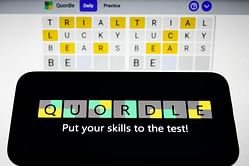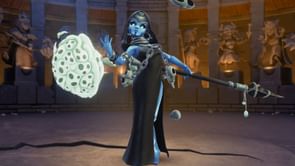
What is the NYT Spelling Bee?
Launched by the New York Times (NYT) in May 2018, the Spelling Bee went viral during the COVID-19 pandemic and became a daily social tool for many. The game was simple; players were presented with seven letters arranged in a hexagonal grid with one letter in the middle. They then had to create four-letter and above words using the letters but each word had to have the letter in the middle.
The game allows letters to be reused and also offers more points for longer words, with the most points being awarded for finding the pangram i.e. a word that uses all seven letters. There are no hints or clues available within the game but the community, known as the “Hive mind” does create clues and post them. These can be found in the comments section of the daily puzzle or across various social media pages. Players can also refer to our Spelling Bee Solver to find all the possible words.
Furthermore, the game also ranks players based on how many points they earn with the ranking starting from Amazing and ending with Queen Bee. The word count, and points count, does differ for every puzzle with some going as high as 100 or even beyond that.
What are the rules of the Spelling Bee?
Unlike most word games, the NYT Spelling Bee is a word game with straightforward rules even if it’s just as mentally challenging as any other word game. The objective of the game is just as straightforward as well, as it tasks players to create words while following two basic guidelines. The main one is that each word created has to use the letter in the middle of the hexagonal grid.
The second guideline is that each word has to have a minimum of four letters, but outside that, solvers don’t have to adhere to anything else. The words do have to be a part of the given, but hidden, word database although that is mainly to stop players from using obscure words to gain points. Letters can be used multiple times and points are given for each word a solver finds, with the longer words getting more points.
The most points are given to the “pangram”, which is a seven-letter word that uses every letter available in the grid and they also earn an additional seven points. Outside that, the game is rather straightforward and also doesn’t follow a weekly difficulty curve like most games. Thus, as a result, a puzzle on a Tuesday could be tougher than one on a Saturday.
What does a “Pangram” mean?
When it comes to day to day usage, a pangram is a special word or phrase that contains every word of the alphabet. However, in terms of the NYT Spelling Bee, the pangram is a special seven-letter word that contains every letter available in the hexagonal grid. These are particularly valuable words as they offer the highest score for players and discovering the pangram alone offers seven bonus points.
Every puzzle does contain at least one pangram although experienced solvers have discovered that sometimes the puzzle’s constructor does add more than one. They are challenging to find though but are a required challenge for those players looking to achieve the coveted “Queen Bee” status within the game. That’s only given to solvers who find every word available in the daily puzzle, which only makes things tougher.
However, it does give players a good chance to improve their vocabulary even if the puzzle does not provide hints or clues.
What does a "Bingo" mean?
Much like most communities for various word games and games alike, the NYT Spelling Bee’s community, known as “Hivemind”, also has its own terminology and jargon for the game. That’s where “Bingo” comes from and it refers to an achievement where a solver uses all seven letters to start at least one word. That’s different from finding a “pangram” which is a required achievement that tasks players with creating a word using all seven letters in the grid.
What does a "Genius" rank Mean?
While “Queen Bee” is the highest possible achievement a solver can achieve in NYT’s Spelling Bee, “Genius” is one below and the highest ranking achievement level a player can get. It’s the penultimate scoring level in the game with Beginner, Good Start, Moving Up, Good, Solid, Nice, Great, and Amazing below it in rankings. Thus, as a result, reaching “Genius” tasks a player with finding close to 80% of the words from the daily puzzle.
The points total for “Genuis” isn’t fixed as it varies depending on the puzzle’s difficulty but as mentioned before, it does usually mean that a player has to find at least 80% of the words available. Thus, if the puzzle’s maximum score is 100, Genius could be hit by earning at least 80 points on average. It is a tough achievement to hit, so much so that research and statistics have shown that only 45% of players achieve “Genius” on a daily basis. However, it also shows that 25% of players do hit that level at least once over the course of a week.
When does the game end?
The NYT Spelling Bee’s daily puzzle ends and resets daily at 3:00 AM Eastern Standard Time and is live for 24 hours, giving players a full day to get their best possible score. This daily reset does follow the trend across the NYT’s game section with games such as Wordle, Connections, Mini, and more following it. But the Spelling Bee’s daily puzzle is over once a player hits the “Queen Bee” level, which is when they have found every single word in the word list.
It's a tough level to hit for newcomers and even many experienced players, with many struggling to even hit the penultimate level, “Genius”. However, the “Queen Bee” achievement is only available for paid subscribers as for non-subscribers, the game unfortunately ends when players hit the “Solid” rank, which is around the half-way mark.








